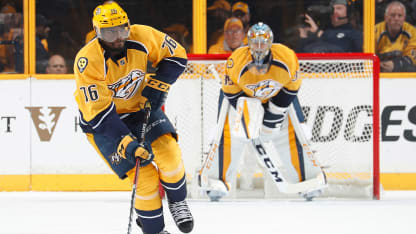The Nashville Predators season has now completed the first quarter of the 82-game marathon. As many have pointed out, the team had a strong month of November to vault back up into the Western Conference playoff pack after a sluggish October.
Though Nashville has moved above the playoff line, it is a true logjam in the West. At the start of play Thursday, teams ranked four through 11 in the Conference standings had between 24-26 points. The Predators have 25 points, though they and the Minnesota Wild have played the fewest amount of games (22) among the group.
Things have stabilized, but there is still a ton of hockey to be played. Statistically, there are things to like. Let's look at a couple of trends:
Statistics Indicate Preds Strong Play Here to Stay
Goal Differential, Road Record and Team's Possession Numbers are Trending Upward



















